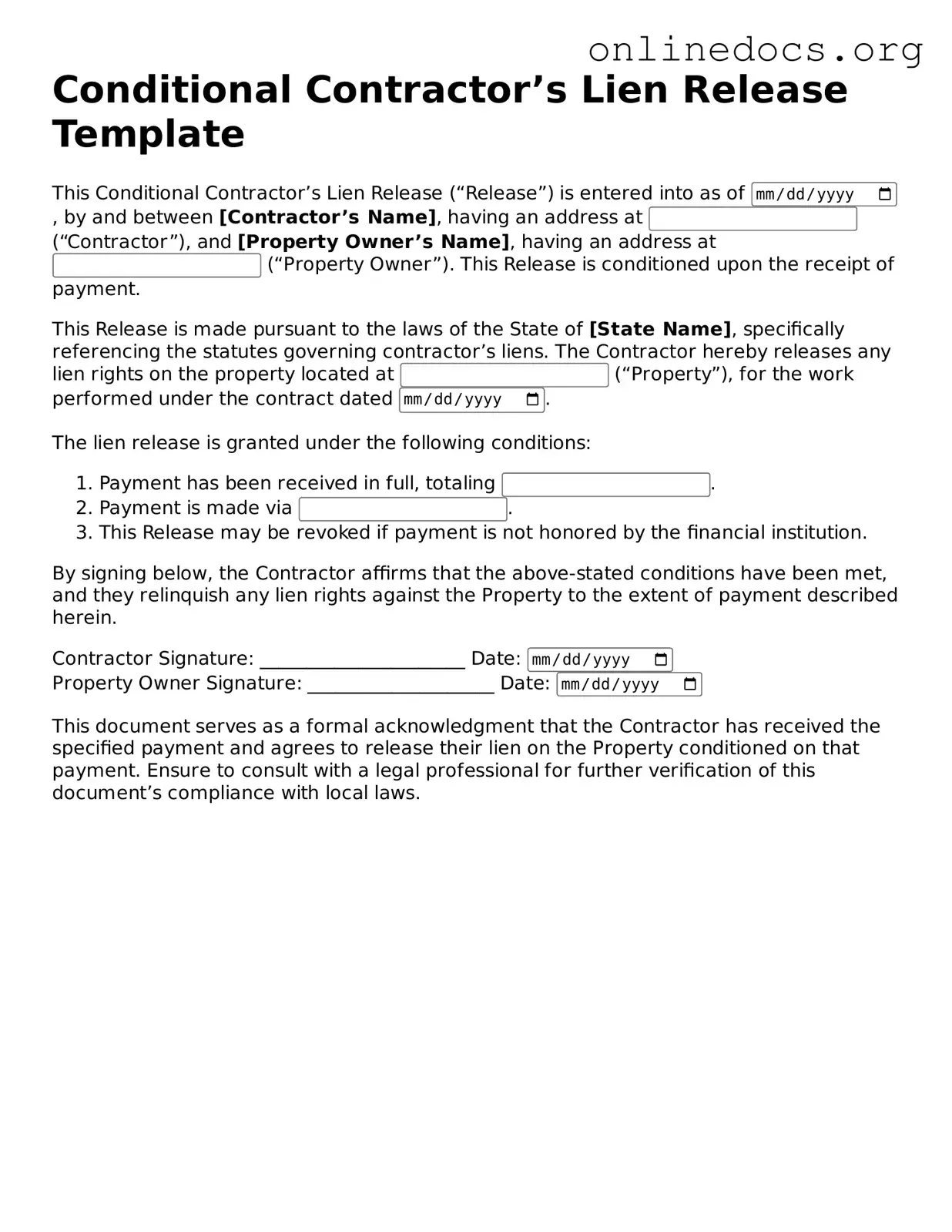Filling out the Conditional Contractor’s Lien Release form can be a straightforward process, but mistakes can lead to complications. One common error is failing to include all necessary information. This form requires specific details, such as the names of the parties involved, the property address, and the amount being released. Omitting any of this information can render the form incomplete.
Another frequent mistake is not signing the form. A signature is essential to validate the document. Without it, the release may not be recognized legally. Additionally, some individuals forget to date the form. Including the date is crucial, as it indicates when the release was executed and can affect its enforceability.
Using the wrong version of the form can also create issues. Forms may vary by state or jurisdiction. It is important to ensure that the correct version is being used to avoid legal complications. Similarly, failing to check for any updates or changes to the form can lead to using outdated information.
Another mistake involves not providing the correct payment details. If a payment was made in exchange for the release, it should be clearly stated. This helps to avoid misunderstandings about whether the lien was properly released in exchange for payment.
Some individuals may also overlook the importance of clarity in the description of the work performed. A vague description can lead to disputes later on. It is advisable to be as specific as possible about the services rendered to ensure all parties are on the same page.
Not keeping a copy of the completed form is another oversight. Retaining a copy for personal records can be beneficial if questions arise in the future. This documentation serves as proof of the release and can be helpful in case of disputes.
Moreover, people sometimes fail to notify all relevant parties after submitting the form. It is important to inform anyone involved in the transaction that the lien has been released. This step helps prevent confusion and ensures that everyone is aware of the current status of the lien.
Another common error is neglecting to consult with a professional if unsure about any aspect of the form. Seeking legal advice can provide clarity and help avoid mistakes that could lead to complications down the line.
Lastly, some may rush through the process without reviewing the completed form thoroughly. Taking the time to double-check all entries can help catch errors before submission. A careful review can save time and effort in the long run.
